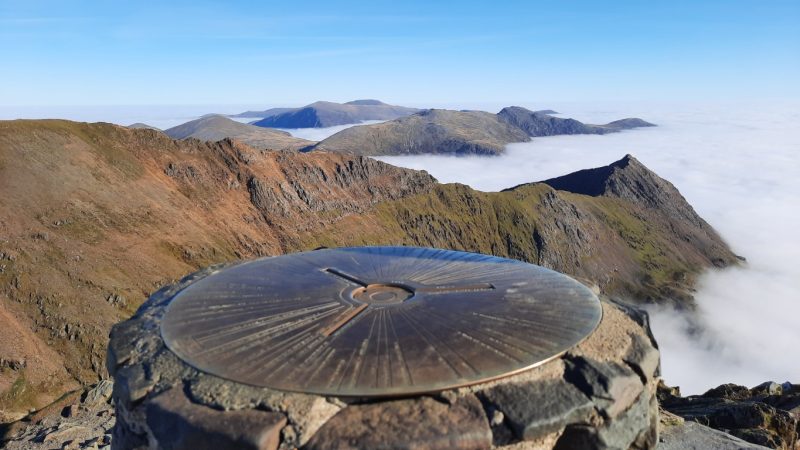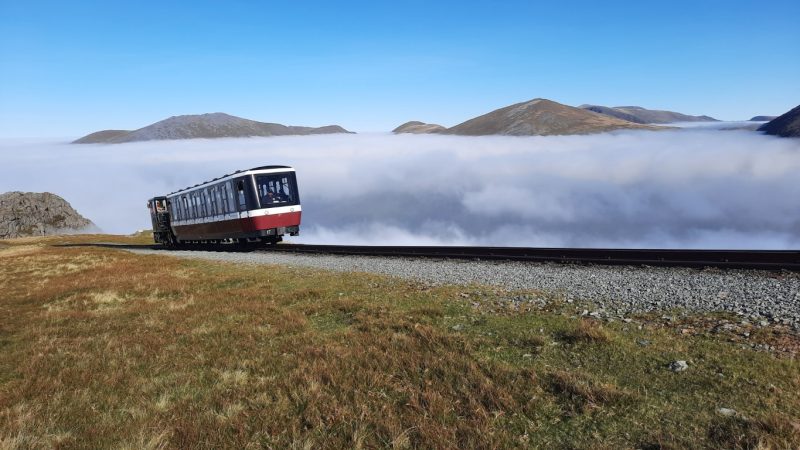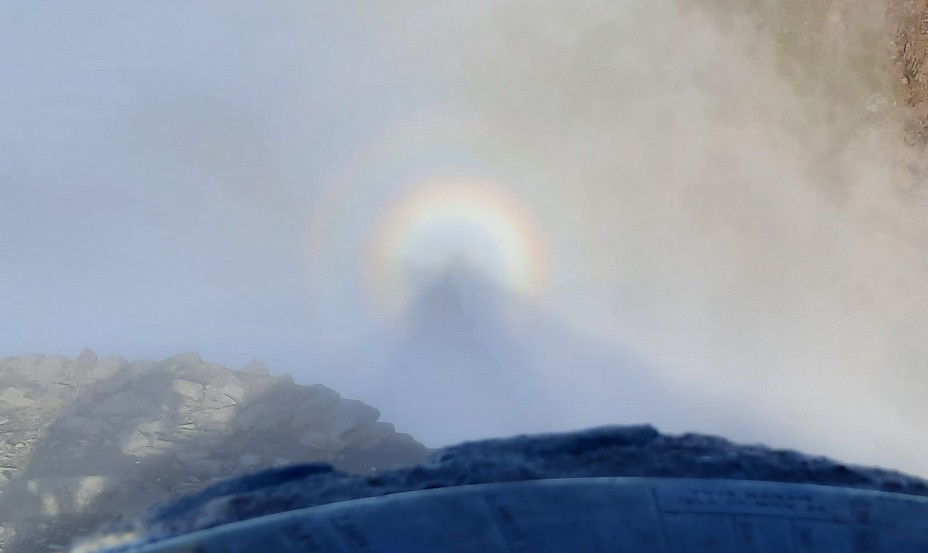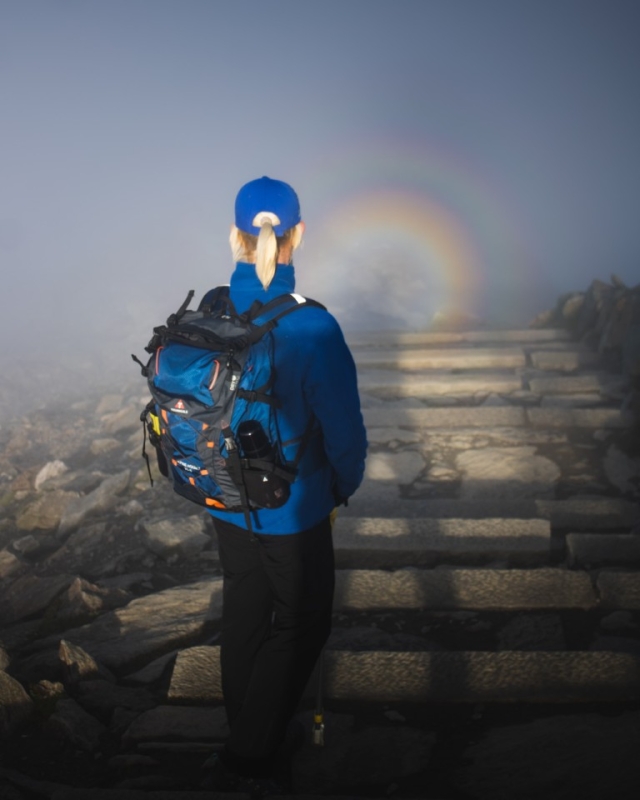Contents
Inversions
Inversions, also called ‘temperature inversions’ (but often wrongly called ‘cloud inversions’) are a stunning sight on Snowdon (or indeed other peaks).
Temperature inversions — when cold air gets trapped in valleys under a layer of warmer air (contrary to the usual vertical temperature gradient) — are fairly rare, but are most common in the autumn and winter months, especially from late October to February.
 The view north from the summit. Above the cloud are Crib Goch, the Glyderau and the distant Carneddau. With a higher cloud-top, only the very peaks would be visible.
The view north from the summit. Above the cloud are Crib Goch, the Glyderau and the distant Carneddau. With a higher cloud-top, only the very peaks would be visible.
This means that you can be at the summit of Snowdon, or on the upper part of the mountain, in the sunshine and under clear skies, when the cloud level is below you. Depending on what the cloud’s upper level is, you can look around and see various other peaks sticking out of the cloud.
If the cloud’s top is at about 3000 ft, then the only peaks that will stick out will be the other 3000ers. If it’s a little lower, at about 2500 ft, then a host of other peaks will also be visible above the cloud, including Cader Idris, nearly 30 miles away as the crow flies.
Inversions can also vary in their quality. At best, they surround the mountain in a 360º view, presenting a flat surface and a horizontal horizon. When not so good, as in a partial inversion, the cloud may be broken up in places, with a surface resembling a wavy or choppy sea, or only cover part of the mountain.
Whilst they are hard to predict, there are clues as to when they might be around:
In terms of the time of year, autumn to early winter is best because the nights are long and clear, allowing the ground and air near it to cool rapidly. Spring can sometimes bring inversions too, but they’re less frequent and shorter-lived.
In terms of weather conditions, we ideally need clear, calm nights followed by still mornings. A stable high pressure system with negligible wind (ideally from the north-ish) often creates the right conditions. After a cold night (if frosty, then even better), valleys may fill with mist while higher peaks stay above the cloud.
The best time of day is morning, with inversions often at their best around sunrise. Often the mist will burn off through the day as the sun warms the air.
 The train has just broken through the cloud near Clogwyn, and when it reaches the summit its passengers will be in for a real treat.
The train has just broken through the cloud near Clogwyn, and when it reaches the summit its passengers will be in for a real treat.
Brocken spectres
A feature often linked with inversions is that of a Brocken spectre, a relatively rare phenomenon.
A Brocken spectre is when you see your shadow on the mist or cloud in front of you, with a rainbow halo around your head. Tiny water droplets in the mist/cloud scatter sunlight, forming a ‘glory’ (the circular rainbow-like halo). Your shadow (projected onto the mist/cloud) is at the centre of this halo — that’s the Brocken spectre!
 A Brocken spectre from the summit pillar itself
A Brocken spectre from the summit pillar itself
Its rareness reflects the combination of factors which are necessary to see one:
- The sun must be behind you and low in the sky, so the best time of day is typically earlier morning or later afternoon.
- You need to be between the Sun and a bank of mist or cloud. The Sun should be shining from behind you, projecting your shadow forward into the mist.
- This will often mean being fairly high up, standing just above a cloud inversion or on the summit ridge when cloud is clinging to one side. You shouldn’t be too high above the cloud though.
In summary, you need the sun low and behind you, with mist or cloud in front of you (not too thick), and a higher vantage point above that cloud. Oh, and you’ll also a certain amount of luck.
Once aware of these factors, you will be in a position to predict where and when to look for a Brocken spectre. (It might, for instance, call for keeping an eye on what’s going on behind you, if the sun is in front of you.) It must be said that they rarely come out as well in photos as compared to the naked eye.
It is interesting to note that, even if there are other people standing beside you, each person will see the phenomenon only around the shadow of their own head, seeing nothing of other people’s heads.
 A ‘localised’ Brocken spectre from the summit approach steps
A ‘localised’ Brocken spectre from the summit approach steps
And in case you’re wondering, the Brocken spectre is named after the Brocken, the highest peak (1,142 m) in the Harz Mountains of Germany; it was first observed and documented by Johann Silberschlag in 1780. The earliest documented sighting of a Brocken spectre on Snowdon was in 1804 by J. S. Duncan, who was mightily impressed; his guide was less impressed, having seen it before.